Related Research Articles

Chris Marker was a French writer, photographer, documentary film director, multimedia artist and film essayist. His best known films are La Jetée (1962), A Grin Without a Cat (1977) and Sans Soleil (1983). Marker is usually associated with the Left Bank subset of the French New Wave that occurred in the late 1950s and 1960s, and included such other filmmakers as Alain Resnais, Agnès Varda and Jacques Demy.

Jean-Luc Godard was a French and Swiss film director, screenwriter, and film critic. He rose to prominence as a pioneer of the French New Wave film movement of the 1960s, alongside such filmmakers as François Truffaut, Agnès Varda, Éric Rohmer and Jacques Demy. He was arguably the most influential French filmmaker of the post-war era. According to AllMovie, his work "revolutionized the motion picture form" through its experimentation with narrative, continuity, sound, and camerawork. His most acclaimed films include Breathless (1960), Vivre sa vie (1962), Contempt (1963), Band of Outsiders (1964), Alphaville (1965), Pierrot le Fou (1965), Masculin Féminin (1966), Weekend (1967) and Goodbye to Language (2014).

Alain Resnais was a French film director and screenwriter whose career extended over more than six decades. After training as a film editor in the mid-1940s, he went on to direct short films including Night and Fog (1956), an influential documentary about the Nazi concentration camps.
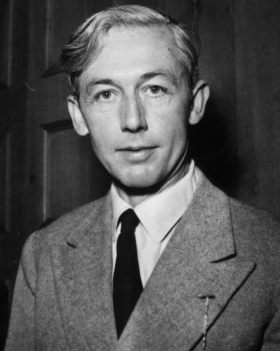
Robert Bresson was a French film director. Known for his ascetic approach, Bresson made a notable contribution to the art of cinema; his non-professional actors, ellipses, and sparse use of scoring have led his works to be regarded as preeminent examples of minimalist film. Much of his work is known for being tragic in story and nature.
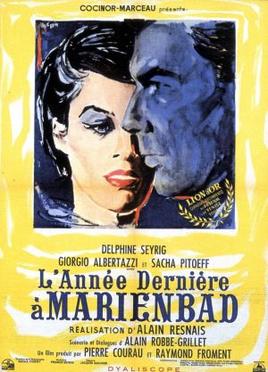
Last Year at Marienbad, released in the United Kingdom as Last Year in Marienbad, is a 1961 French New Wave avant-garde psychological drama film directed by Alain Resnais and written by Alain Robbe-Grillet.

Agnès Varda was a Belgian-born French film director, screenwriter and photographer.

The New Wave, also called the French New Wave, is a French art film movement that emerged in the late 1950s. The movement was characterized by its rejection of traditional filmmaking conventions in favor of experimentation and a spirit of iconoclasm. New Wave filmmakers explored new approaches to editing, visual style, and narrative, as well as engagement with the social and political upheavals of the era, often making use of irony or exploring existential themes. The New Wave is often considered one of the most influential movements in the history of cinema.

The Cinémathèque française, founded in 1936, is a French non-profit film organization that holds one of the largest archives of film documents and film-related objects in the world. Based in Paris's 12th arrondissement, the archive offers daily screenings of films from around the world. It is the second oldest cinematheque in France, after the one in Saint-Étienne, which was founded in 1922.
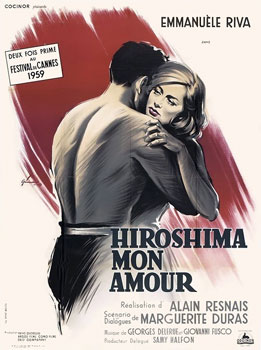
Hiroshima mon amour, is a 1959 romantic drama film directed by French director Alain Resnais and written by French author Marguerite Duras.
The Prix Jean Vigo is an award in the French cinema given annually since 1951 to a French film director, in homage to Jean Vigo. Since 1960, the award has been given to both a director of a feature film and to a director of a short film. The award is usually given to a young director, for their independent spirit and stylistic originality.
Anatole Dauman was a French film producer. He produced films by Jean-Luc Godard, Robert Bresson, Wim Wenders, Nagisa Oshima, Andrei Tarkovsky, Chris Marker, Volker Schlöndorff, Walerian Borowczyk, and Alain Resnais.
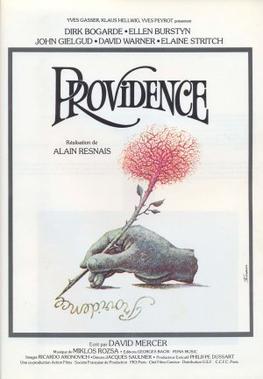
Providence is a 1977 French/Swiss film directed by Alain Resnais from a screenplay by David Mercer. It explores the processes of creativity through a portrayal of an ageing novelist, played by John Gielgud, who imagines scenes for his latest novel which draw upon his past and his relationships with members of his family. The film won the 1978 César Award for Best Film.
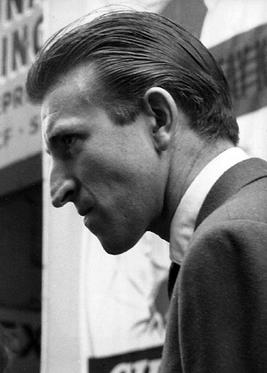
Henri Colpi was a French film editor and film director.

William Klein was an American-born French photographer and filmmaker noted for his ironic approach to both media and his extensive use of unusual photographic techniques in the context of photojournalism and fashion photography. He was ranked 25th on Professional Photographer's list of 100 most influential photographers.
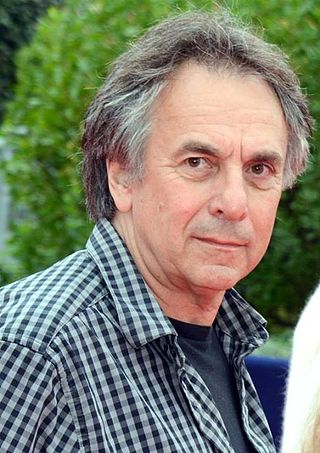
Bruno Nuytten is a French cinematographer turned director.
Agnès Godard is a French cinematographer. She is most famous for her long-running collaboration with filmmaker Claire Denis. For her work, she has won a César Award.
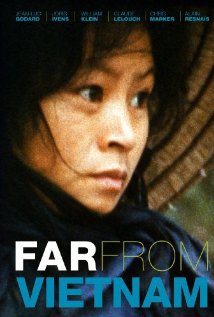
Far from Vietnam is a 1967 French documentary film directed by Joris Ivens, William Klein, Claude Lelouch, Agnès Varda, Jean-Luc Godard, Chris Marker and Alain Resnais.

Night and Fog is a 1956 French documentary short film. Directed by Alain Resnais, it was made ten years after the liberation of Nazi concentration camps. The title is taken from the Nacht und Nebel program of abductions and disappearances decreed by Nazi Germany. The documentary features the abandoned grounds of Auschwitz and Majdanek established in occupied Poland while describing the lives of prisoners in the camps. Night and Fog was made in collaboration with scriptwriter Jean Cayrol, a survivor of the Mauthausen-Gusen concentration camp. The music of the soundtrack was composed by Hanns Eisler.
European art cinema is a branch of cinema that was popular in the latter half of the 20th century. It is based on a rejection of the tenets and techniques of classical Hollywood cinema.

Nana Oforiatta Ayim is a Ghanaian writer, art historian and filmmaker.
References
- Notes
- ↑ Milne, Tom (1986). "Commentary". Godard on Godard: Critical Writings by Jean-Luc Godard. Da Capo Press. p. 267. ISBN 0-306-80259-7.
- ↑ Jones, Derek (December 2001). Censorship: A World Encyclopedia. Routledge. ISBN 9781136798641.
- ↑ Alter 2006 , p. 57
- ↑ Alter 2006 , p. 59
- 1 2 Alter 2006 , p. 60
- ↑ Birgit Kämper and Thomas Tode, "Intervista con Alain Resnais", in Bernard EISENSCHITZ (ed.), Chris Marker, Festival de Pesaro, Rome: Dino Audino Editore, 1996, p. 45
- 1 2 3 Wilson 2006 , pp. 22–23
- ↑ "Les Statues meurent aussi". AlloCiné (in French). Tiger Global . Retrieved 2011-09-01.
- ↑ Oforiatta-Ayim, Nana (May 2011). "Speak Now". Frieze (139). Retrieved 2011-09-01.
- Bibliography
- Alter, Nora M. (2006). Chris Marker . Champaign, Illinois: University of Illinois Press. pp. 57–60. ISBN 978-0-252-03073-4.
- Wilson, Emma (2006). Alain Resnais. Manchester: Manchester University Press. pp. 22–23. ISBN 0-7190-6406--6.